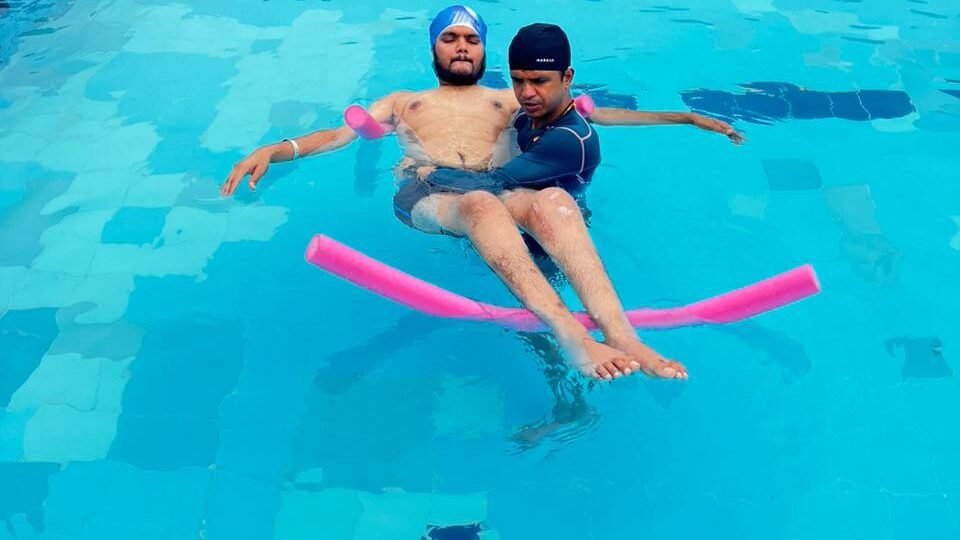Spinal cord injuries (SCI) are life-altering events that can lead to significant physical, emotional, and psychological challenges. Traditional rehabilitation methods often include physical therapy, occupational therapy, and sometimes surgical interventions. Among these, hydrotherapy, also known as aquatic therapy, has emerged as a highly effective and beneficial treatment modality for individuals with SCI. This article explores how hydrotherapy aids in the recovery process of spinal cord injuries.

What is Hydrotherapy?
Hydrotherapy involves the use of water for pain relief and treatment. It utilizes the physical properties of water, such as buoyancy, resistance, and temperature, to facilitate therapeutic exercises and promote healing. This therapy can be conducted in various settings, including pools, hot tubs, and specialized hydrotherapy tanks.
How Hydrotherapy Aids in SCI Recovery
Buoyancy and Reduced Impact:
Water’s buoyancy helps in making movements easy for individuals with SCI or any other neuro conditions because there is no gravity inside the water. It supports the body, reducing the stress and impact on joints and muscles.
Furthermore, buoyancy is particularly beneficial for individuals with SCI, as it allows them to perform movements and exercises that might be too difficult or painful on land. The buoyant force helps in partially unloading the weight of the patient, making movements easier and reducing the risk of injury during rehabilitation exercises.
Resistance and Muscle Strengthening:
Water provides a natural resistance that helps in muscle strengthening without the need for weights or resistance bands.
This resistance can be adjusted by changing the speed and intensity of movements, allowing for a customizable and progressive exercise regimen. Strengthening the muscles around the injury site is crucial for improving stability and mobility.
Improved Circulation and Cardiovascular Health:
Immersion in water can enhance blood circulation, which is essential for healing and reducing inflammation.
The hydrostatic pressure exerted by water helps in promoting venous return and improving overall cardiovascular health. Enhanced circulation also aids in the delivery of oxygen and nutrients to injured tissues, facilitating the healing process.
Pain Reduction:
The warm temperature of therapeutic pools can soothe muscles and joints, reducing pain and discomfort. The relaxation induced by warm water immersion can also help in reducing muscle spasms and tension, which is often experienced by individuals with SCI.
Improved Range of Motion and Flexibility:
Hydrotherapy can significantly improve the range of motion and flexibility of joints. The water environment allows for a greater range of movement with less discomfort, helping patients to regain mobility. Additionally, regular stretching and movement in water can prevent contractures and improve overall flexibility.
Psychological Benefits:
The calming and soothing properties of water can have significant psychological benefits. Hydrotherapy sessions provide a sense of relaxation and well-being, which is crucial for individuals coping with the emotional and mental stress of SCI. The positive and supportive environment of hydrotherapy can enhance motivation and improve overall mental health.
Implementation of Hydrotherapy in SCI Rehabilitation

Hydrotherapy should be administered by trained professionals who can tailor the exercises to the specific needs and abilities of each patient. A typical hydrotherapy session may include:
- Warm-Up Exercises: Gentle movements and stretching to prepare the body for more intensive exercises.
- Strength and Conditioning: Targeted exercises to strengthen muscles and improve cardiovascular health.
- Range of Motion and Flexibility Exercises: Movements designed to enhance joint mobility and flexibility.
- Cool-Down and Relaxation: Gentle stretches and relaxation techniques to conclude the session.
Conclusion
Hydrotherapy is a valuable and effective treatment modality for individuals recovering from spinal cord injuries. It is not only beneficial for person with SCI but for all neuro/ortho/geriatric conditions. Its unique properties and benefits make it an ideal complement to traditional rehabilitation methods. By reducing pain, enhancing muscle strength, improving cardiovascular health, and providing psychological support, hydrotherapy plays a crucial role in the holistic recovery of SCI patients. As research continues to support its benefits, hydrotherapy is likely to become an integral part of rehabilitation programs for spinal cord injury recovery.

